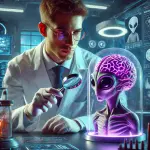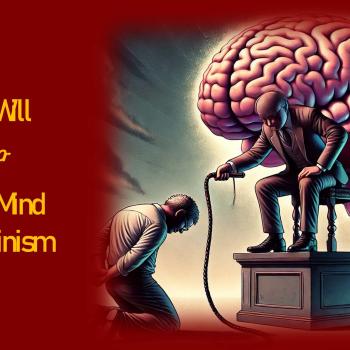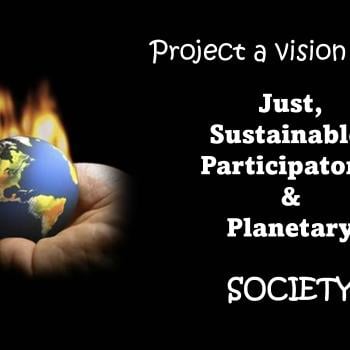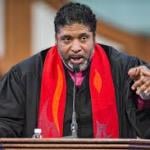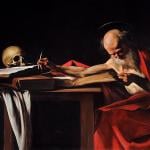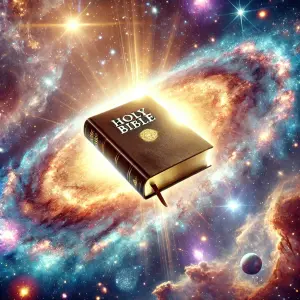
Could you predict that Martin Luther’s Theology of the Cross would become a flashlight to illuminate what is hidden within Big Bang physics? Is this the best way to put Big Bang and the Bible together?
Hyung-Joo Lee on Big Bang and the Bible
On Monday, February 17, 2025, Hyung-Joo Lee successfully defended his dissertation at the Graduate Theological Union in Berkeley, California. Hooray!
Do you want to know the dissertation’s title? Get ready, it’s a long one. Our Inflationary Big Bang Universe as Creation, as the Ground for Redemption, and as Characterized by Intra-Physics Emergence. Just the title sends my head spinning.

This is Hyung-Joo’s second Ph.D. His first one was in physics. This one is in systematic theology. In the future he will become a professor of Theology and Science.
Sometimes doctoral students send my caliginous mind into palpitations. I’m now aflutter over what I said in my previous Patheos post, Are the Bible and Big Bang Consonant? Hyung-Joo relies on the latest physics in dialogue with the best of systematic theology . Further, he adds his own courageous insights combined with persuasive argumentation. It’s time for me, the professor, to take notes from the student.

I’m not the only professor, of course. Hyung-Joo’s doctoral committee was led by hybrid physicist-theologian Robert John Russell (Russell, 2008), whom we call “Bob.” Claremont Lincoln’s Philip Clayton, a renowned leader in the field of Theology and Science, was the third reader (Clayton, 2006).
So, just what did Hyung-Joo say that I wish to pass on to my Patheos friends? Hyung-Joo argues that if we look through the lens of Martin Luther’s Theology of the Cross we will see hiddenness within multiple layers of physical contingencies.

“The manifest and visible things of God are placed in opposition to the invisible, namely, his human nature, weakness, foolishness …. It does [a theologian] no good to recognize God in his glory and majesty, unless he recognizes him in the humility and shame of the cross ….’Truly, thou art a God who hidest thyself’ (Isaiah 45:15) (Luther, 1955-1986, pp. 31: 52-53).
Didja git that?
Contingency in Both Big Bang and the Bible
How about a little background on Big Bang and the Bible?
Jews and Christians who read Genesis become aware of the contingency of creation. Our physical and historical world cannot account for itself. It did not create itself. It’s logically possible that our universe might never have come into existence. That is, our physical universe is contingent. That there would be a universe with you and me in it is the product of God’s decision.
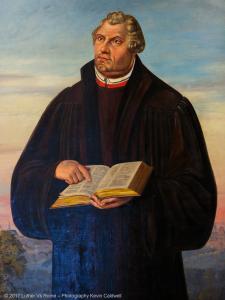
When physical cosmologists trace the history of our cosmos back to its beginning, it looks to them like physical reality is contingent on something logically if not temporally prior to it. Time and space begin at t=0, at the Big Bang. Just as the biblical book of Genesis might report it.
Recall from the previous Patheos post the debate between the Singularity within the Standard Big Bang model (SM = Standard Model), on the one hand, and the no-boundary proposal of an eternal atemporal quantum reality that spews out multiple universes, on the other. I contended that SM – and only SM — is consonant with the biblical model, because at the beginning time and space are created.
Over against my position stands physicist Stephen Hawking (Hawking, 2010) along with Bob (Russell, 1989) and Lord Martin Reese (Rees, 2003). These three provide scientific evidence for the multiverse, what Hawking called “M-Theory.”
Recall how theologian Bob argues that M-Theory is also consonant with the Bible because even the idea of the multiverse implies contingency (Russell, 2008). God could have created the multiverse just as God could have created our specific universe out of the Big Bang. In sum, contingent dependence on the creator God applies equally to SM and multiverse theory.
With whom does Hyung-Joo side? With Bob and those other physicists, of course. But I will not cry over this. Well, at least not where you can see me cry.
Intra-Physics Emergence as Contingency over Time

What biologists know as emergence describes how the whole of a living organism is greater than the sum of its parts. The rose growing in your back yard garden is made up of the same chemicals every other plant is. Yet, the shape and color and fragrance of the rose are properties that have emerged from chemical processes which themselves do not exhibit these properties. The distinctive traits of the rose are contingent products of emergence.
Emergence takes place within physics too, says Hyung-Joo. In fact, the world within which we live has a history of emergent events that have brought us to where we are today.
“The world in which we live can be interpreted as an outcome of a multiple series of emergences, each of which is subsequent to the emergence prior to it: Our Big Bang universe emerged from a more complex universe, and our ordinary world emerged from our Big Bang universe through multiple series of emergences. This suggests there is a sequence in the intra-physics emergence of our Big Bang universe and ordinary world” (Lee, 2025, pp. 143-144).
The life and history of our Big Bang cosmos cannot be reduced to the properties exhibited by General Relativity theory, for example. That our universe is homogeneous and isotropic is not necessarily required by properties inherited from General Relativity. Spacetimes’ homogeneity and isotropy are contingent properties. Newly emergent after t=0.
Even if Big Bang’s t=0 does not mark the absolute beginning of all things, nevertheless, the Big Bang is itself contingent upon its emergence from a prior reality. And if contingent, then biblical. Right!?
Another way to put it
Here’s another way to put it. What Hyung-Joo the physicist contends is that the field of physics has not provided a single comprehensive theory to explain everything in physical reality. What we have is a collection of multiple theories that explain one or more emergent phases of material history. More specifically, theories differ when trying to explain low energy scales from high energy scales.
“In sum, I claim that there is no single theory that effectively describes the entire history of the universe and the behaviors of its constituents. This is do to the fact that theories effectively describe physics of a system depend on the energy scales of that system….What constituted the very early universe, merely quantum fluctuations of fields, were qualitatively different from the constituents of our Big Bang universe, namely elementary particles with their own characteristics, such as mass” (Lee, 2025, p. 170).
What is important to the theologian is that no single physical theory is sufficiently comprehensive to provide a single coherent account of the whole of the past. Nor the whole of the future.
The Higgs Boson provides mass to what were previously quantum fields
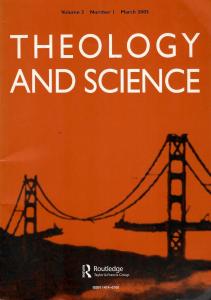
Just in passing, let me mention that I along with a physicist friend, Carl Peterson, celebrated the discovery of the Higgs Boson in an article, “The Higgs Boson: An Adventure in Critical Realism.” The Higgs Boson – did it emerge? – is what determines the mass of particles. Gravity, and hence Einstein’s General Relativity Theory, obtains only when particles have mass. Prior to the emergence of mass, the universe was governed only by quantum field fluctuations. In short, we need quantum theory for the early universe and General Relativity theory for the later universe. Does this epistemic divide suggest that the history of reality is made up of contingent – unpredictable — events?
Higgs schmigs. Here’s the takeaway. Things change. Even at the basic level of physics, new properties emerge over time so that we cannot say that everything real was already present at the point of origin. Even the laws of physics applicable to the early universe need to be amended because of new properties that have emerged over time.
There is more. The future of the cosmos will not be exhaustively determined by the laws of physics as we know them today. If you ask your neighborhood cosmologist about the far future of the universe, the answer will plunge you into a nihilistic depression. Everything will die a heat death. Blame entropy. Once the universe expands as far as it can go, it will gradually die down into a state of equilibrium. No more energy. No more activity. The dead cosmos will look like your cereal bowl after the Frosted Flakes have absorbed all the milk. Blah.
Is there reason to hope for God’s new creation?
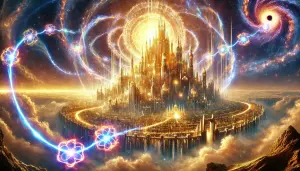
The future death of God’s creation may look futile, otiose, hopeless. Not to Hyung-Joo Lee! The future will not be predetermined by the past. New things are possible. God has promised transformation, redemption, fulfillment.
This is how Luther’s Theology of the Cross applies to Big Bang and the Bible. What physicists project looks futile; but the cross of Jesus Christ followed by the Easter resurrection reveals just the opposite. God’s eschatological new creation will emerge with new laws of physics. Among those new laws will be that the dead shall rise just as Jesus rose on the first Easter (1 Corinthians 15:20). This is why Bob so frequently remarks: the Easter resurrection of Jesus is the “first instantiation of a new law of nature” (Russell, 2008, p. 129).
Conclusion
The biblical promise of God’s redemption of all creation symbolized by the kingdom of God or the New Jerusalem will not need to violate the laws of physics. Those laws are not permanent. They are temporal. We can expect new theories of physics to be devised after we cross thresholds of emergence, perhaps even new laws when God raises the dead.
How do the Big Bang and the Bible fit together? Ask Dr. Dr. Hyung-Joo Lee. He has opened a window within physical cosmology to make credulous our hope for the transformatory future promised in the Bible.
Patheos SR 2025. Big Bang and the Bible: Hyung-Joo Lee
SR 5022 Working on Science and Religion: Update
SR 5023 Prebunking Disinformation
SR 5024 Are Bible and Big Bang Consonant?
SR 5025 Big Bang and the Bible: Hyung-Joo Lee
▓
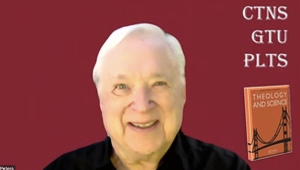
Ted Peters directs traffic at the intersection of science, religion, and ethics. Peters is an emeritus professor at the Graduate Theological Union, where he co-edits the journal, Theology and Science, with Robert John Russell on behalf of the Center for Theology and the Natural Sciences, in Berkeley, California, USA. He authored Playing God? Genetic Determinism and Human Freedom? (Routledge, 2nd ed., 2002) as well as Science, Theology, and Ethics (Ashgate 2003). Along with Martinez Hewlett, Joshua Moritz, and Robert John Russell, he co-edited, Astrotheology: Science and Theology Meet Extraterrestrial Intelligence (2018). Along with Octavio Chon Torres, Joseph Seckbach, and Russell Gordon, he co-edited, Astrobiology: Science, Ethics, and Public Policy (Scrivener 2021). He has just edited The Promise and Perils of AI and IA: New Technology Meets Religion, Theology, and Ethics (ATF 2025) and with Arvin Gouw co-edited The CRISPR Revolution in Science, Theology and Ethics (Bloomsbury 2025). See his website: TedsTimelyTake.com.
▓
References
Clayton, P., 2006. Conceptual Foundations of Emergence Theory. In: P. C. a. P. Davies, ed. The Re-Emergence of Emergence. Oxford: Oxford University Press, pp. 5-20.
Hawking, S. a. L. M., 2010. The Grand Design. New York: Bantam.
Lee, H.-J., 2025. Our Inflationary Big Bang Universe as Creation, as teh Ground for Redemption, and as Characterized by Intra-Physics Emergence, Berkeley CA: Graduate Theological Union.
Luther, M., 1955-1986. LW. Luther’s Works, American Edition, 55 Volumes: St. Louis and Minneapolis: Concordia and Fortress.
Rees, M., 2003. Our Final Hour. New York: Basic.
Russell, R. J., 1989. Cosmology, Creation, and Contingency. In: Cosmos and Creation. Nashville TN: Abingdon, pp. 177-210.
Russell, R. J., 2008. Cosmology from Alpha to Omega: The Creative Mutual Interaction of Theology and Science. Minneapolis MN: Fortress Press ISBN 978-0-8006-6273-8.



